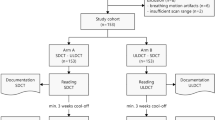Abstract
Background
Previous studies have identified a downstream referral age and gender bias for invasive coronary anatomy evaluation after single-photon emission computed tomography myocardial perfusion imaging (SPECT MPI). The present study evaluates if such bias still persists despite advancements in SPECT MPI and angiography. We hypothesized that women and patients ≥80 years old are less likely to undergo invasive coronary angiography after adjusting for clinical and scan variables.
Methods
Patients (n = 3824) who referred to a nuclear cardiology laboratory at a tertiary medical center were retrospectively identified. Regression analysis tested age (<55; 55-69; 70-79; ≥80 years) and gender as predictors of diagnostic angiogram at 90 days post-SPECT after adjustment for known CAD, CAD risk equivalent, SSS, SDS, and LVEF.
Results
Younger patients were more likely to undergo an angiogram as compared to octogenarians (77% more likely if <55 years old, 69% if 55-69 years old, and 52% if 70-79 years old). No effect was found for gender.
Conclusions
Older patients were less likely to be referred for angiogram as compared to their younger counterparts. Further study is needed to determine which factors guide this decision-making process in older adults and the influence of these factors on the referral bias.
Similar content being viewed by others
Abbreviations
- MPI:
-
Myocardial perfusion imaging
- SPECT:
-
Single-photon emission computerized tomography
- CAD:
-
Coronary artery disease
- SSS:
-
Summed stress score
- SDS:
-
Summed difference score
- LVEF:
-
Left ventricular ejection fraction
References
Ling LF, Marwick TH, Flores DR, Jaber WA, Brunken RC, Cerqueira MD, et al. Identification of therapeutic benefit from revascularization in patients with left ventricular systolic dysfunction: Inducible ischemia versus hibernating myocardium. Circ Cardiovasc Imaging 2013;6:363-72.
Allman KC, Shaw LJ, Hachamovitch R, Udelson JE. Myocardial viability testing and impact of revascularization on prognosis in patients with coronary artery disease and left ventricular dysfunction: A meta-analysis. J Am Coll Cardiol 2002;39:1151-8.
Min JK, Berman DS, Dunning A, Achenbach S, Al-Mallah M, Budoff MJ, et al. All-cause mortality benefit of coronary revascularization vs. medical therapy in patients without known coronary artery disease undergoing coronary computed tomographic angiography: Results from CONFIRM (COronary CT Angiography EvaluatioN For Clinical Outcomes: An InteRnational Multicenter Registry). Eur Heart J 2012;33:3088-97.
Beery TA. Gender bias in the diagnosis and treatment of coronary artery disease. Heart Lung 1995;24:427-35.
Bickell NA, Pieper KS, Lee KL, Mark DB, Glower DD, Pryor DB, et al. Referral patterns for coronary artery disease treatment: Gender bias or good clinical judgment? Ann Intern Med 1992;116:791-7.
Lauer MS, Pashkow FJ, Snader CE, Harvey SA, Thomas JD, Marwick TH. Age and referral to coronary angiography after an abnormal treadmill thallium test. Am Heart J 1997;133:139-46.
Steingart RM, Packer M, Hamm P, Coglianese ME, Gersh B, Geltman EM, et al. Sex differences in the management of coronary artery disease. Survival and Ventricular Enlargement Investigators. N Engl J Med 1991;325:226-30.
Wenger NK. Clinical characteristics of coronary heart disease in women: Emphasis on gender differences. Cardiovasc Res 2002;53:558-67.
Khandaker MH, Miller TD, Chareonthaitawee P, Askew JW, Hodge DO, Gibbons RJ. Stress single photon emission computed tomography for detection of coronary artery disease and risk stratification of asymptomatic patients at moderate risk. J Nucl Cardiol 2009;16:516-23.
Mahmarian JJ, Shaw LJ, Filipchuk NG, Dakik HA, Iskander SS, Ruddy TD, et al. A multinational study to establish the value of early adenosine technetium-99 m sestamibi myocardial perfusion imaging in identifying a low-risk group for early hospital discharge after acute myocardial infarction. J Am Coll Cardiol 2006;48:2448-57.
Shaw LJ, Heller GV, Travin MI, Lauer M, Marwick T, Hachamovitch R, et al. Cost analysis of diagnostic testing for coronary artery disease in women with stable chest pain. Economics of Noninvasive Diagnosis (END) Study Group. J Nucl Cardiol 1999;6:559-69.
Shaw LJ, Berman DS, Maron DJ, Mancini GB, Hayes SW, Hartigan PM, et al. Optimal medical therapy with or without percutaneous coronary intervention to reduce ischemic burden: Results from the Clinical Outcomes Utilizing Revascularization and Aggressive Drug Evaluation (COURAGE) trial nuclear substudy. Circulation 2008;117:1283-91.
Amanullah AM, Kiat H, Hachamovitch R, Cabico JA, Cohen I, Friedman JD, et al. Impact of myocardial perfusion single-photon emission computed tomography on referral to catheterization of the very elderly. Is there evidence of gender-related referral bias? J Am Coll Cardiol 1996;28:680-6.
DeGeare VS, Stone GW, Grines L, Brodie BR, Cox DA, Garcia E, et al. Angiographic and clinical characteristics associated with increased in-hospital mortality in elderly patients with acute myocardial infarction undergoing percutaneous intervention (a pooled analysis of the primary angioplasty in myocardial infarction trials). Am J Cardiol 2000;86:30-4.
Zafrir N, Mats I, Solodky A, Ben-Gal T, Battler A. Characteristics and outcome of octogenarian population referred for myocardial perfusion imaging: Comparison with non-octogenarian population with reference to gender. Clin Cardiol 2006;29:117-20.
Quantitative Gated SPECT. 2015; http://cedars-sinai.edu/Patients/Programs-and-Services/Medicine-Department/Artificial-Intelligence-in-Medicine-AIM/Projects/Quantitative-Gated-SPECT-QGS.aspx.
Miller TD, Roger VL, Hodge DO, Hopfenspirger MR, Bailey KR, Gibbons RJ. Gender differences and temporal trends in clinical characteristics, stress test results and use of invasive procedures in patients undergoing evaluation for coronary artery disease. J Am Coll Cardiol 2001;38:690-7.
Mark DB, Shaw LK, DeLong ER, Califf RM, Pryor DB. Absence of sex bias in the referral of patients for cardiac catheterization. N Engl J Med 1994;330:1101-6.
Krumholz HM, Douglas PS, Lauer MS, Pasternak RC. Selection of patients for coronary angiography and coronary revascularization early after myocardial infarction: Is there evidence for a gender bias? Ann Intern Med 1992;116:785-90.
Lauer MS, Pashkow FJ, Snader CE, Harvey SA, Thomas JD, Marwick TH. Gender and referral for coronary angiography after treadmill thallium testing. Am J Cardiol 1996;78:278-83.
Disclosure
Roman Zeltser, MD; Leanne Tortez, MS; Renee Pekmezaris, PhD; Andrzej Kozikowski, PhD; Amgad Makaryus, MD; Regina Druz, MD; and Martin Lesser, PhD, have nothing to disclose.
Author information
Authors and Affiliations
Corresponding author
Additional information
See related editorial, doi:10.1007/s12350-016-0581-5.
Rights and permissions
About this article
Cite this article
Zeltser, R., Tortez, L.M., Druz, R.S. et al. Downstream resource utilization following SPECT: Impact of age and gender. J. Nucl. Cardiol. 24, 1657–1661 (2017). https://doi.org/10.1007/s12350-016-0464-9
Received:
Accepted:
Published:
Issue Date:
DOI: https://doi.org/10.1007/s12350-016-0464-9




